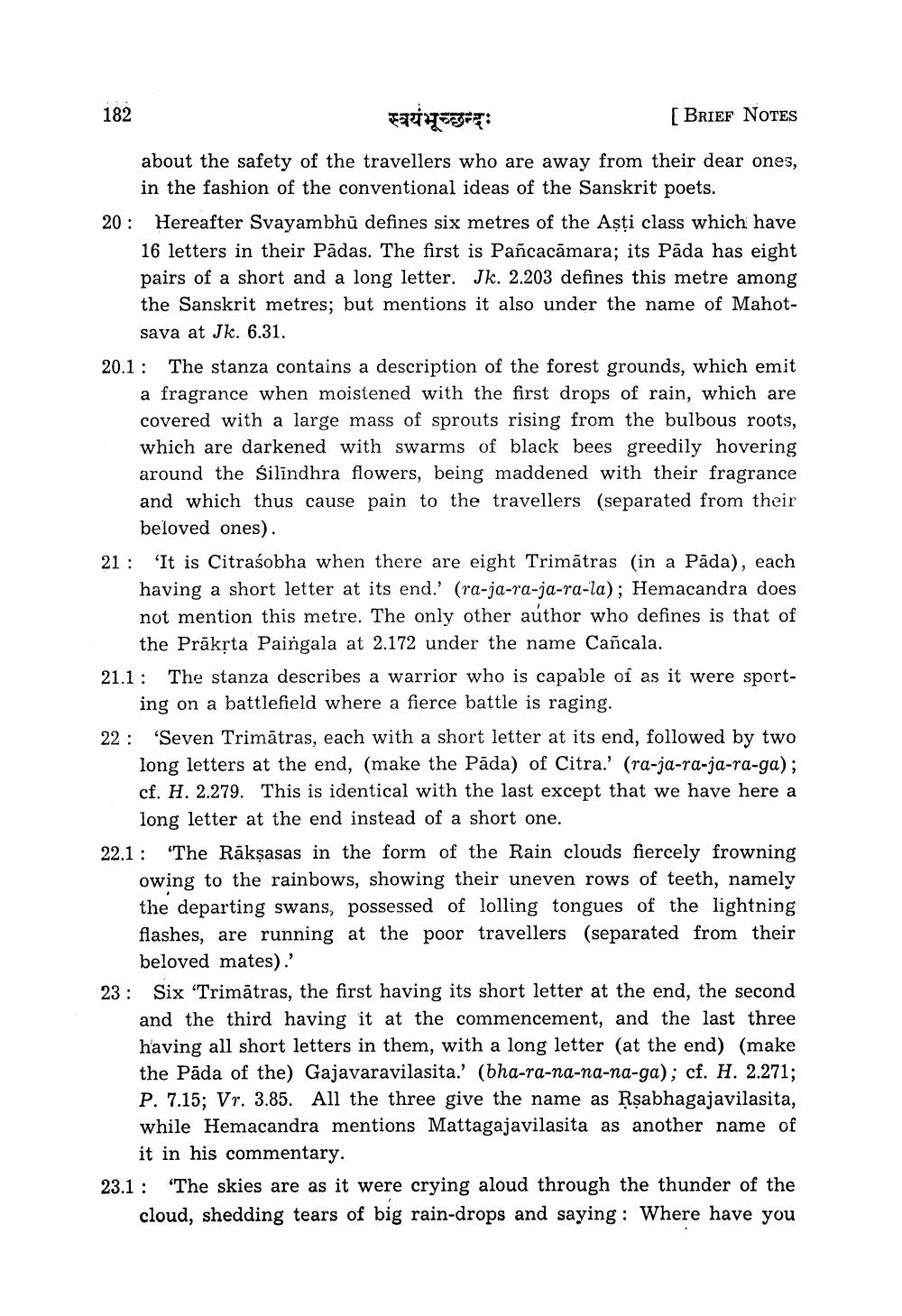________________
182
स्वयंभूच्छन्दः
[BRIEF NOTES
about the safety of the travellers who are away from their dear ones,
in the fashion of the conventional ideas of the Sanskrit poets. 20: Hereafter Svayambhū defines six metres of the Asti class which have
16 letters in their Pādas. The first is Pañcacāmara; its Pāda has eight pairs of a short and a long letter. Jk. 2.203 defines this metre among the Sanskrit metres; but mentions it also under the name of Mahot
sava at Jk. 6.31. 20.1: The stanza contains a description of the forest grounds, which emit
a fragrance when moistened with the first drops of rain, which are covered with a large mass of sprouts rising from the bulbous roots, which are darkened with swarms of black bees greedily hovering around the Silindhra flowers, being maddened with their fragrance and which thus cause pain to the travellers (separated from their
beloved ones). 21: 'It is Citraíobha when there are eight Trimātras (in a Pada), each
having a short letter at its end.' (ra-ja-ra-ja-ra-la); Hemacandra does not mention this metre. The only other author who defines is that of
the Prāksta Paingala at 2.172 under the name Cañcala. 21.1: The stanza describes a warrior who is capable of as it were sport
ing on a battlefield where a fierce battle is raging. 22: "Seven Trimātras, each with a short letter at its end, followed by two
long letters at the end, (make the Pāda) of Citra.' (ra-ja-ra-ja-ra-ga); cf. H. 2.279. This is identical with the last except that we have here a
long letter at the end instead of a short one. 22.1: "The Rākşasas in the form of the Rain clouds fiercely frowning
owing to the rainbows, showing their uneven rows of teeth, namely the departing swans, possessed of lolling tongues of the lightning flashes, are running at the poor travellers (separated from their
beloved mates).' 23: Six 'Trimātras, the first having its short letter at the end, the second
and the third having it at the commencement, and the last three having all short letters in them, with a long letter (at the end) (make the Pāda of the) Gajavaravilasita.' (bha-ra-na-na-na-ga); cf. H. 2.271; P. 7.15; Vr. 3.85. All the three give the name as Rsabhagajavilasita, while Hemacandra mentions Mattagajavilasita as another name of
it in his commentary. 23.1: "The skies are as it were crying aloud through the thunder of the
cloud, shedding tears of big rain-drops and saying: Where have you




